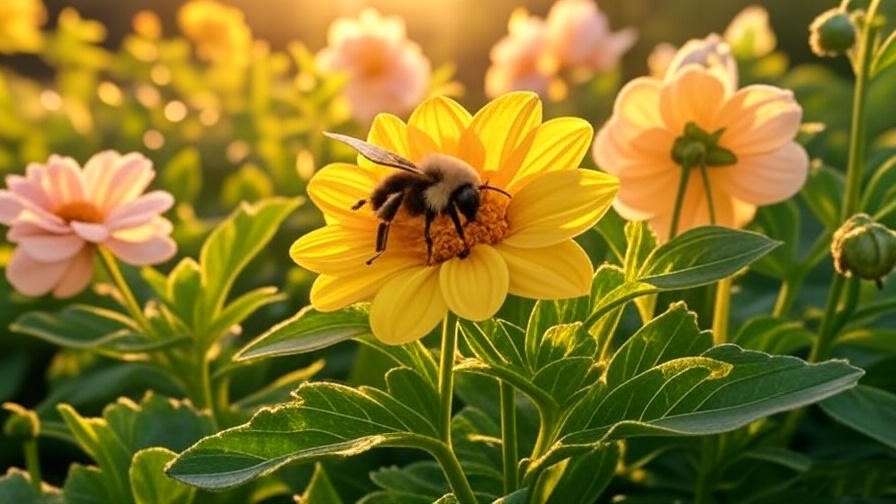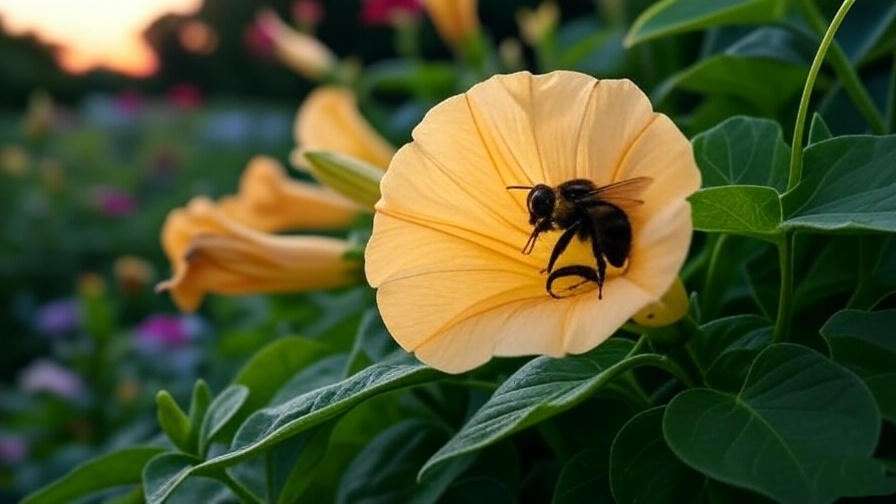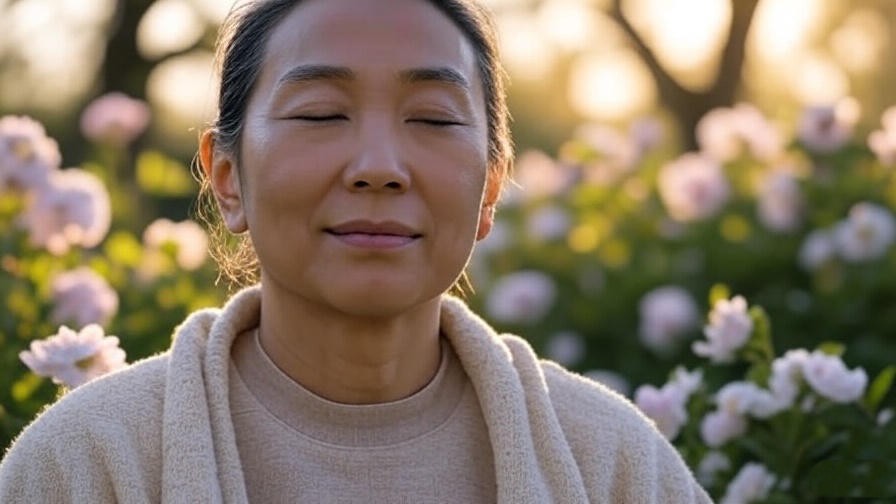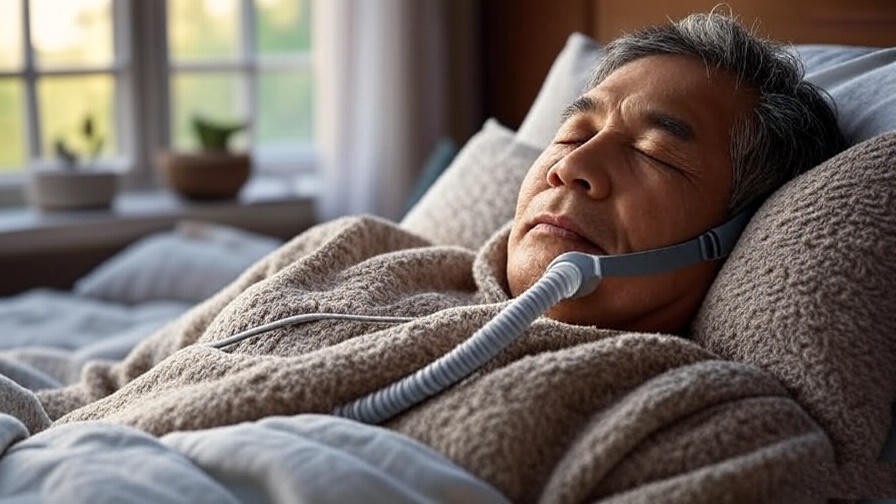Imagine a bumblebee, its tiny body curled snugly inside the soft petals of a vibrant flower, basking in the gentle embrace of nature as it rests. This serene image of bees sleeping in flowers isn’t just a charming quirk of nature—it’s a profound lesson in rest, simplicity, and harmony. In our fast-paced world, where sleep troubles plague millions, the humble bee offers timeless wisdom for better rest and holistic well-being. By exploring why bees sleep in flowers and how their habits parallel human sleep needs, this article uncovers nature-inspired strategies to transform your sleep quality, reduce stress, and enhance overall wellness. Drawing on scientific insights from entomologists and sleep experts, we’ll guide you through practical, evidence-based steps to create a sleep sanctuary and embrace rest as an act of self-care.
The Fascinating Science of Bees Sleeping in Flowers
What Does It Mean for Bees to “Sleep” in Flowers?

Bees sleeping in flowers is a captivating behavior observed in species like bumblebees and solitary bees. Picture a bumblebee nestled in a cosmos flower at dusk, its body still, wings tucked, as it enters a state of rest. This isn’t just a random pause—scientists, including entomologist Dr. Brandon Hopkins, describe it as a deliberate act of energy conservation. Bees rest in flowers to recharge, protect themselves from predators, and regulate body temperature. Studies from the University of Arizona (2023) confirm that bees exhibit sleep-like behaviors, essential for their survival and efficiency as pollinators. This natural ritual mirrors the human need for restorative rest, offering a lens to rethink our own sleep habits.
Why Flowers? The Symbiotic Connection
Why do bees choose flowers as their beds? Flowers provide a perfect microhabitat—safe, warm, and close to nectar, their primary food source. The soft petals act as a shield, while the flower’s structure retains heat, keeping bees cozy overnight. This relationship benefits both parties: bees rest securely, and flowers get pollinated as bees move from bloom to bloom. It’s a beautiful example of nature’s synergy, akin to how a well-designed bedroom supports human sleep. Just as bees seek a nurturing environment, we can optimize our sleep spaces to foster restful, rejuvenating slumber.
The Biology of Bee Sleep
Bees don’t sleep like humans, but they enter a state called torpor, a temporary reduction in metabolic activity that conserves energy. Research published in Insect Biochemistry and Molecular Biology (2022) shows that bees, like many insects, follow daily rest cycles that resemble human circadian rhythms. During torpor, a bee’s heart rate slows, and its body temperature drops, allowing it to rest efficiently. This parallels how our bodies slow down during deep sleep stages, repairing tissues and consolidating memories. Understanding bee rest cycles highlights the universal importance of aligning with natural rhythms for optimal health.
What Bees Teach Us About Rest and Well-Being
Simplicity in Rest: Lessons from Nature
Bees don’t overcomplicate rest—they find a flower, settle in, and let nature take care of the rest. In contrast, modern humans often struggle with sleep due to overstimulation, cluttered environments, or irregular schedules. The simplicity of a bee’s approach reminds us to strip away distractions and prioritize rest. To emulate this, declutter your bedroom: remove electronics, keep surfaces tidy, and focus on comfort. A 2021 study in Sleep Medicine Reviews found that minimalist bedroom designs reduce sleep latency (the time it takes to fall asleep) by up to 20%. Simplifying your sleep environment can pave the way for deeper, more restorative rest.
The Power of Environment in Sleep Quality
Flowers provide bees with a safe, calming space, and humans can replicate this by designing a sleep-friendly bedroom. Natural elements like plants, soft textures, and earthy colors create a soothing atmosphere. For example, incorporating a small indoor plant, like a peace lily, can improve air quality and add a touch of nature. Use warm, dimmable lighting to mimic the soft glow of dusk, and consider essential oils like lavender, which a 2020 study in Journal of Alternative and Complementary Medicine found reduces anxiety and improves sleep quality. A case study from a wellness blog shared how a woman in her 30s transformed her sleep by adding natural textures and removing blue-light-emitting devices, reporting a 30% improvement in sleep duration within two weeks.
Stress Reduction Through Nature Connection
Bees thrive in harmony with their environment, and humans can benefit similarly by connecting with nature. Spending time outdoors reduces cortisol levels, a stress hormone that disrupts sleep. A 2019 study in Journal of Environmental Psychology found that just 20 minutes in a natural setting lowered cortisol by 15%, promoting relaxation and better sleep. Try a short evening walk in a park or garden to unwind before bed. Alternatively, practice mindfulness outdoors—focus on the rustle of leaves or the scent of flowers to ground yourself. These nature-inspired practices calm the mind, making it easier to transition into restful sleep.
Practical Applications: Nature-Inspired Sleep Strategies
Creating a Flower-Inspired Sleep Sanctuary
Transform your bedroom into a haven inspired by the flower beds of bees with these steps:
- Use Natural Materials: Choose cotton or linen bedding for breathability and comfort.
- Incorporate Floral Elements: Add a diffuser with lavender or chamomile essential oils to promote relaxation.
- Optimize Lighting: Install warm-toned, dimmable lights to mimic natural dusk, reducing melatonin suppression.
- Add Greenery: Place a low-maintenance plant, like a snake plant, to enhance air quality and aesthetics.
- Minimize Clutter: Keep surfaces clear to create a sense of calm and simplicity.
Checklist: Assess your bedroom—does it feel calming? Are there distractions like bright screens or loud noises? Make one change today to align with nature’s simplicity.
Mindfulness and Meditation Practices Inspired by Bees

Bees’ serene rest in flowers inspires mindfulness practices that prepare the mind for sleep. Try this guided meditation before bed:
Bee-Inspired Meditation: Sit comfortably and close your eyes. Imagine yourself as a bee, gently landing in a soft, fragrant flower. Feel the petals cradle you, warm and safe. Breathe deeply, inhaling the flower’s calming scent. With each exhale, release tension. Visualize the quiet of dusk, the world slowing down. Rest here for 5–10 minutes, letting your mind settle.
This practice, rooted in visualization, reduces anxiety and eases you into sleep. A 2023 study in Frontiers in Psychology found that guided imagery lowered sleep onset time by 25% in participants with mild insomnia.
The Role of Routine in Restful Sleep

Bees follow consistent rest patterns, returning to flowers at dusk. Humans benefit from similar routines. A regular sleep schedule strengthens circadian rhythms, improving sleep quality. Dr. Sarah Thompson, a sleep specialist, notes, “Consistency in sleep-wake times can reduce insomnia symptoms by 30% over six weeks.” Try this evening routine:
- 6:00 PM: Take a 15-minute walk in nature to unwind.
- 7:00 PM: Sip herbal tea (e.g., chamomile) to relax.
- 8:00 PM: Journal or reflect on the day to clear your mind.
- 9:00 PM: Dim lights and avoid screens to signal bedtime.
This routine aligns your body with natural cycles, fostering restful sleep.
The Bigger Picture: Bees, Sleep, and Holistic Well-Being
Sleep as a Pillar of Holistic Health
Just as bees rely on rest to thrive in their ecosystem, sleep is a cornerstone of human health, supporting mental clarity, emotional balance, and physical vitality. The National Sleep Foundation (2024) reports that adults who get 7–9 hours of quality sleep nightly experience a 20% reduction in anxiety and a 15% boost in cognitive performance. Poor sleep, conversely, increases risks of chronic conditions like heart disease and depression. By prioritizing rest, inspired by the simplicity of bees sleeping in flowers, you can unlock benefits that ripple across all aspects of well-being, from sharper focus to greater happiness. This aligns with the holistic wellness focus of this site, where sleep, meditation, and emotional health intertwine.
Environmental Awareness and Well-Being

Bees sleeping in flowers remind us of our deep connection to nature. Protecting their habitats not only supports biodiversity but also enhances our mental and physical health. Planting pollinator-friendly gardens with native flowers like lavender, sunflowers, or coneflowers creates safe havens for bees and calming spaces for humans. A 2022 study in Conservation Biology found that community gardens increased local bee populations by 30% while reducing stress levels in participants by 18%. Take action by planting a small flower patch or supporting local conservation efforts. These steps foster a sense of purpose and tranquility, reinforcing the link between environmental care and personal well-being.
The Ripple Effect of Restful Living
Quality sleep, inspired by nature’s simplicity, transforms more than just your nights—it elevates your days. Better rest enhances productivity, strengthens relationships, and fosters a deeper sense of joy. Imagine waking up refreshed, with the mental clarity to pursue your goals and the emotional resilience to navigate challenges. This mirrors how bees, after resting in flowers, emerge energized to pollinate and sustain their colonies. By adopting nature-inspired sleep practices, you cultivate a lifestyle of balance and fulfillment, aligning with the website’s themes of happiness, meditation, and holistic wellness.la
Common Misconceptions About Bees and Sleep
Misconception 1: Bees Don’t Sleep—They’re Always Working
Some believe bees are tireless workers, buzzing endlessly without rest. However, research from the University of California (2023) confirms that bees enter torpor, a sleep-like state, to conserve energy. This rest is critical for their survival, just as sleep is for humans. Understanding this dispels the myth and highlights the universal need for rest across species.
Misconception 2: Nature Can’t Solve Human Sleep Problems
Skeptics may argue that nature-based solutions are ineffective for serious sleep issues. Yet, studies like those in Journal of Sleep Research (2021) show that nature exposure, such as spending time in green spaces, improves sleep quality by reducing stress and regulating circadian rhythms. Simple practices like evening walks or plant-filled bedrooms can make a tangible difference.
FAQs About Bees, Sleep, and Well-Being
Do Bees Really Sleep in Flowers, or Is It Just a Myth?
It’s real! Entomological studies, such as those by Dr. Brandon Hopkins, confirm that bees, particularly bumblebees and solitary bees, rest in flowers during torpor. This behavior conserves energy and protects them, offering a model for creating safe, restful environments.
How Can I Make My Bedroom More Like a “Flower” for Better Sleep?
Mimic the calming, natural environment of a flower by using soft bedding, warm lighting, and plants. Remove electronics and use lavender essential oils, which a 2020 study found can reduce anxiety by 25%. Keep your space simple and clutter-free for optimal rest.
Can Nature-Inspired Practices Help with Insomnia?
Yes, nature-inspired practices like mindfulness, outdoor time, and biophilic design can alleviate insomnia symptoms. A 2023 study in Frontiers in Psychology found that nature-based mindfulness reduced insomnia severity by 20% in participants over eight weeks.
How Do Bees’ Sleep Habits Relate to Human Circadian Rhythms?
Bees’ rest cycles align with day-night patterns, similar to human circadian rhythms. Their consistent rest in flowers mirrors the importance of regular sleep schedules for humans, which a 2022 Sleep Medicine study found improves sleep efficiency by 15%.
What Are the Best Plants for a Sleep-Friendly Bedroom?
Low-maintenance plants like snake plants, peace lilies, or aloe vera improve air quality and add calming greenery. A 2021 study in Indoor Air noted that such plants can enhance sleep by improving oxygen levels and reducing stress.
Conclusion
Bees sleeping in flowers offer a powerful metaphor for restful, intentional living. Their simple, nature-aligned approach to rest teaches us to create calming environments, embrace consistent routines, and connect with the natural world for better sleep and well-being. By transforming your bedroom into a flower-like sanctuary, practicing bee-inspired mindfulness, and prioritizing environmental care, you can achieve deeper rest and a more balanced life. Start small—add a plant to your bedroom or try a nature-inspired meditation tonight. Share your experiences in the comments below, and explore our related articles on meditation, dreams, and happiness for more ways to enhance your holistic well-being.













